On This Page: [hide]
Have you ever wondered what is hosting a website or what is the best way to host one? It is not hard. All you need is the right information delivered to you in the right way.
The majority of people who are beginners don’t know anything about how running a website works.
Choosing the correct way of getting your site up and running can be easy and take just a few minutes, the amount of time required to register an email address. Read on below to see how a beginner, can learn more on hosting a website easily. You do not need to have particular computer skills.
We will go into more detail on hosting a website as further as this post develops. That is if you want to know more about the process and help you see that there is more than one type of way to hosting a website.
In this blog we are going to cover:
- Types of Web Hosting Services Essentials
- All Components You Need to Running a Website
- Hosting a Website with the Right Plan – Our Recommendations
- How Much Will All Above Cost
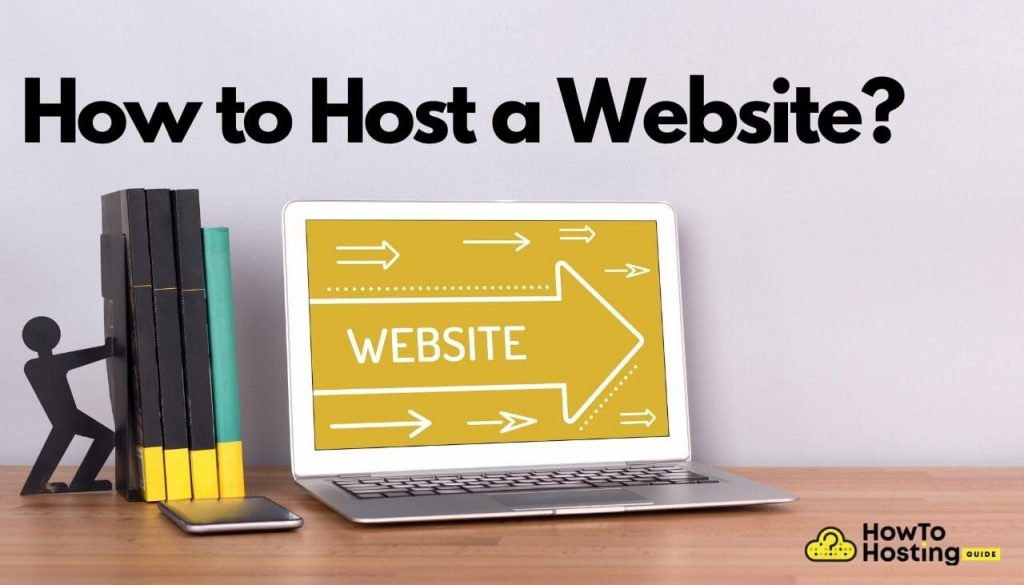
Hosting a Website – Overview
In layman’s terms, Web Hosting is the home of your site, as in the place is the place you put all your site files. More specifically, these files are stored on a powerful computer machine, which is called a server, which makes your site and its files accessible on the Internet.
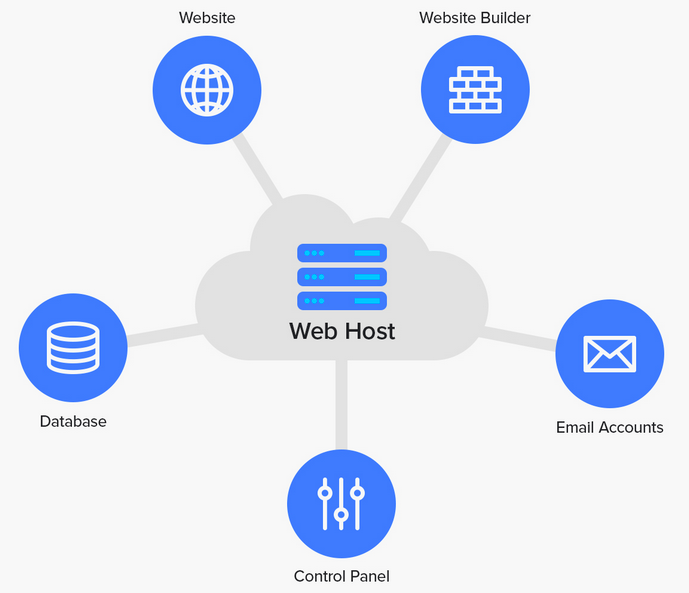
Image Source: Fitsmallbusiness.com
Thus, it goes public for the World to see and visit.
You have a powerful computer, and you are asking yourself, “But why can’t I host my website with my own computer?” Well, that server that will store your site has a lot more resources and power and is in a facility called a data center.
A data center is like an impenetrable fortress, which costs millions.
A data center has the following:
- Temperature Control
- Fire Suppression or Air Suction System
- High level of bandwidth
- High level of physical security
- Backup Systems
(so servers don’t overheat and everything run smoothly)
(in case of fire, to be extinguished quickly)
(provides speed to your site all over the World as well as reliability)
(the room should be locked, the humidity maintained at optimum, access granted only to certified employees, etc.)
(backup of your files, so they are never lost, and backup of the machines, so your site is always running and accessible on the Internet)
Another thing that is necessary for a server to make your site seen around the World through the Web is special software to be installed. The software is called a Web-server.
This Web-server receives incoming requests and responds by sending the requested site page to browsers to access the requested webpage.
Paying lots of money to have a server running in a room, on a machine in a data center is unnecessary.
Yet, you do not need to know every detail, neither all technical terms to know how to host your website, nor paying a fortune to do it.
Fortunately, some companies offer such a service, at a low price, and include software for easy customization of your site with just a few clicks.
There is a company behind each website hosted that you visit on the Internet daily.
Even a big site such as PayPal uses a third-party service provider, just like Facebook was on Harvard University servers, before becoming a multi-million business and building its own data center.
Why is Web Hosting Crucial for Your Website?
Web hosting serves as the foundation that allows your website to be accessible on the internet. Without hosting, your site’s files would have no place to reside, making it impossible for users worldwide to access your content.
But web hosting isn’t only about making your website available. It’s about ensuring that your site remains secure, reliable, and performs well for anyone who visits it. Let’s delve into why these aspects are critical.
Reliability
Hosting your website with a reputable provider means your site is more likely to be up and running around the clock.
- Web hosts employ various measures to ensure servers stay operational, reducing the risk of downtime.
- Proper allocation of server resources helps maintain website reliability and consistent performance.
This reliability is essential because if your site is frequently down, you risk losing visitors and potential customers.
Performance
The speed at which your website loads can make or break the user experience. Hosting providers optimize their servers for speed, ensuring your website loads quickly.
- The right hosting plan can significantly improve your site’s speed.
- Improved performance benefits both user experience and SEO rankings.
- Hosting providers help handle traffic spikes through resource management and scaling capabilities.
Support
When things go wrong, having access to expert support is critical. Hosting services typically include customer support to help with:
- Server and hosting-related issues
- Ensuring uptime and stability
- Quick resolution of technical problems
By prioritizing these factors in your hosting decision, you can provide a quality experience for your visitors and safeguard your online presence.
Deciphering the Types of Web Hosting Services
Choosing the right web hosting service is a fundamental step in launching a website. It affects your website’s performance, accessibility, and overall success on the internet.
Each hosting type offers a different environment, providing varying levels of control, resources, and customization to suit different needs.
When selecting a hosting service, it’s important to compare key features such as:
- Hosting technology
- Built-in tools and utilities
- CMS compatibility (e.g., WordPress, Joomla)
- Available hosting plans and pricing
Let’s break down the common types of web hosting services to help you find the best fit for your digital presence.
What is Shared Hosting and Who Should Use It?
Shared hosting is a budget-friendly option where your website resides on the same server as many other websites. All the sites on that server share resources such as CPU time, memory, and disk space.
This type of hosting is ideal for:
- First-time website owners
- Small businesses
- Personal blogs
- Websites expecting low to medium traffic
Shared hosting is popular because it significantly reduces hosting costs, making it an affordable choice for beginners and small sites.
However, shared hosting may struggle with:
- High traffic spikes
- Resource-heavy web applications
As a result, it is less suitable for large or high-demand websites that require greater stability and performance.
Exploring Dedicated Hosting: Is It Right for You?
Dedicated hosting offers the exclusive use of a server, giving you full control over its resources and environment. This type of hosting is often compared to owning a home, where you have the freedom to fully customize your space.
Dedicated servers provide exclusive resources and are designed for large, high-traffic websites. It is ideal for:
- Enterprise-level websites
- Large businesses
- eCommerce platforms
- Websites with high volumes of traffic
Key benefits of dedicated hosting include:
- Unparalleled performance
- Enhanced security
- Extensive customization and configuration options
- Advanced server management features
However, dedicated hosting also requires:
- A higher financial investment
- Technical expertise to manage and maintain the server infrastructure
If your website demands significant resources and you have both the budget and technical capabilities, dedicated hosting could be the perfect choice for your online presence.
VPS Hosting Explained: A Middle Ground Worth Considering
Virtual Private Server (VPS) hosting offers a balanced solution between shared and dedicated hosting. In VPS hosting, a physical server is divided into virtual compartments, each with its own dedicated resources.
VPS uses virtual private environments, giving users more control and flexibility than shared hosting, but without the higher costs of dedicated hosting.
VPS hosting is ideal for:
- Medium-sized businesses
- Growing blogs with increasing traffic
- Small e-commerce websites that need better performance
- Sites requiring greater stability and fewer neighbor-related slowdowns
It’s a great choice if you’re looking for improved reliability and resource allocation for your website without the significant investment of a dedicated server.
Understanding Uptime Guarantees and Why They Matter
Uptime is a measure of reliability and should be a top consideration when choosing your web hosting provider. It refers to the percentage of time that a hosting service keeps your website up and running without any downtime.
An uptime guarantee of 99.9% is considered the industry standard, ensuring that your site is almost always available to your users.
Downtime can significantly impact your website, from lost sales in an e-commerce setting to reduced readership for blogs.
Uptime guarantees are therefore not just numbers but commitments from web hosting providers to maintain the highest levels of performance and reliability.
If a provider stands behind their uptime with a guarantee, it reflects their confidence in their infrastructure and their commitment to their clients.
Moreover, providers that monitor their servers 24/7 and have redundancy plans are better positioned to minimize and quickly resolve unexpected outages.
This level of reliability is crucial for maintaining your site’s reputation and user satisfaction. When selecting a web host, prioritize those that offer strong uptime guarantees coupled with robust security measures to protect your site from potential threats.
Why is Web Hosting Crucial for Your Website?
Web hosting serves as the foundation that allows your website to be accessible on the internet. Without hosting, your site’s files would have no place to reside, making it impossible for users worldwide to access your content.
But web hosting isn’t only about making your website available. It’s about ensuring that your site remains secure, reliable, and performs well for anyone who visits it. Let’s delve into why these aspects are critical.
Reliability: Hosting your website with a reputable provider means your site is more likely to be up and running around the clock.
Web hosts employ various measures to ensure servers stay operational, reducing the risk of downtime.
This reliability is essential because if your site is frequently down, you risk losing visitors and potential customers.
Performance: The speed at which your website loads can either make or break the user experience. Hosting providers optimize their servers for speed, ensuring that your website loads quickly.
A swift loading website not only pleases visitors but also contributes positively to your site’s SEO rankings.
Support: When things go awry, having access to expert support can save the day. Hosting services typically include customer support to assist with any hosting-related issues you might encounter, ensuring that any potential disruptions to your site’s availability or performance are swiftly addressed.
Ultimately, choosing the right web hosting solution is about more than just finding a place to store your website. It’s about ensuring that your site remains accessible, secure, and performs well at all times. By prioritizing these factors in your hosting decision, you can provide a quality experience for your visitors and safeguard your online presence.
Deciphering the Types of Web Hosting Services
Choosing the right web hosting service is a fundamental step in launching a website. It affects your website’s performance, accessibility, and overall success on the internet. Let’s break down the common types of web hosting services to help you find the best fit for your digital presence.
What is Shared Hosting and Who Should Use It?
Shared hosting is a budget-friendly option where your website resides on the same server as many others. All the websites on the server share resources such as CPU time, memory, and disk space.
This type of hosting is ideal for first-time website owners, small businesses, and blogs that expect low to medium traffic. It’s a great starting point due to its low cost and simplicity of use. However, shared hosting might struggle to keep up with high traffic spikes or demanding web applications, making it less suitable for highly trafficked or resource-heavy sites.
Exploring Dedicated Hosting: Is It Right for You?
Dedicated hosting offers the exclusive use of a server, providing full control over the resources and environment. This type of hosting is likened to owning a home, with complete freedom to customize your space.
It’s well-suited for large businesses, eCommerce sites, and websites that receive high volumes of traffic. With dedicated hosting, you have unparalleled performance, security, and customization options. However, it requires a higher investment and technical expertise to manage the server efficiently.
If your website needs significant resources and you have the budget and skills, dedicated hosting could be the perfect choice.
VPS Hosting Explained: A Middle Ground Worth Considering
Virtual Private Server (VPS) hosting offers a middle ground between shared and dedicated hosting. In VPS hosting, a server is divided into virtual compartments with dedicated resources.
This arrangement provides more control and flexibility than shared hosting, without the higher costs of dedicated hosting. VPS hosting is suitable for medium-sized businesses, blogs that are growing in traffic, or small e-commerce sites needing more performance and less neighborly interference.
It’s a great choice if you’re looking for more reliability and resource allocation for your website without the significant investment of a dedicated server.
Cloud Hosting Demystified: What Makes It Different?
Cloud hosting operates across multiple interconnected web servers that share the load and resources required to maintain websites. This type of hosting provides great flexibility and scalability, allowing resources to be adjusted based on the website’s demand.
Cloud hosting is ideal for websites with fluctuating traffic, as it can dynamically adapt to handle spikes without the need for manual intervention.
It combines the ease of shared hosting with the performance and scalability of VPS hosting. Small to large businesses, high-traffic blogs, and applications with variable workloads benefit the most from cloud hosting. Given its scalability and reliability, cloud hosting has become a popular choice for businesses aiming for high performance and growth.
Step-by-Step Guide to Hosting Your Website
Hosting your website is like finding a physical space for your online business or blog. This space is on the internet, where your website’s files, including its text, images, and code, live.
So, when someone types your website’s address into their browser, their computer connects to the server where your website is hosted, and the server shows them your website. With a solid plan and step-by-step guide, you can make your website accessible to anyone in the world.
Step 1: Define Your Website’s Requirements
Before diving into the vast ocean of web hosting, take a moment to assess what your website truly needs. Think about the type of website you’re creating – is it a personal blog, a portfolio, or a full-fledged eCommerce site?
Each type requires different resources. For instance, an online store might need more storage for product images and a more robust security system for customer data than a simple blog.
Consider factors like expected traffic, needed storage space, security features, and whether you’ll need support for technologies like databases or a specific content management system (CMS).
Step 2: Compare and Choose a Web Hosting Plan
Now that you know your requirements, it’s time to shop around.
There are various hosting plans available, including shared hosting, VPS (Virtual Private Server) hosting, dedicated hosting, and cloud hosting. Each has its pros and cons, such as cost differences and the level of resources allocated to your site. Shared hosting might be sufficient for new, small websites with low traffic.
In contrast, sites expecting a lot of visitors or handling sensitive transactions might benefit from the dedicated resources of VPS or dedicated hosting. Look for a provider that offers scalable solutions, strong security features, and reliable customer support.
Step 3: Registering Your Domain Name
Your domain name is your website’s address on the internet; it’s what people type in the browser to visit your site. Choose a domain name that reflects your brand or the content of your website and is easy to remember.
Most hosting providers offer domain registration as part of their hosting packages, sometimes even for free for the first year.
Registering your domain through your hosting provider can simplify the process, but you can also choose to register it through a separate domain registrar.
Step 4: Setting Up Your Website on the Host
After choosing a hosting plan and registering your domain, the next step is to set up your website on the hosting account.
Most providers offer easy-to-use control panels that allow you to install a CMS like WordPress, Joomla, or Drupal with just a few clicks.
If you’re building your website from scratch, you can upload your website files to the server using FTP (File Transfer Protocol).
Make sure to configure DNS (Domain Name System) settings to point your domain to your hosting server, ensuring visitors who type your domain name get directed to your website.
Step 5: Publish Your Website and Go Live
The final step is the most exciting: publishing your website to make it accessible to the world. Before you hit that publish button, double-check your website for any errors, broken links, or unfinished areas. It’s also a good idea to ensure your website is optimized for search engines, which can help people find your site.
Once you’re satisfied everything is in order, go ahead and make your website live. Keep an eye on your site’s performance and be ready to make adjustments as needed. Regularly updating content, monitoring site speed, and analyzing visitor behavior will help your website grow and improve over time.
Launching a website is just the beginning. As your site grows, you may need to upgrade your hosting plan or optimize your site for better performance. Remember, a reliable and secure website provides a solid foundation for your online presence.
Security Measures Every Website Owner Should Consider
In the digital era, the security of a website cannot be overlooked. With cyber threats on the rise, it’s essential for website owners to adopt robust security measures to protect their online presence.
Implementing these security practices not only safeguards your website from potential threats but also builds trust with your visitors.
Importance of SSL Certificates for Website Security
An SSL (Secure Sockets Layer) certificate is a cornerstone of website security.
This digital certificate establishes an encrypted link between a web server and a browser, ensuring that all data passed between them remains private and integral. Here’s why an SSL certificate is imperative for your website:
- Encryption: SSL certificates encrypt the data exchanged, making it virtually impossible for hackers to decipher.
- Authentication: It verifies the identity of the website to visitors, assuring them that they are not on a fake site designed to phish their information.
- SEO Benefits: Search engines favor secure websites. Having an SSL certificate can improve your website’s search engine ranking.
- Trust and Credibility: Websites with SSL certificates display a padlock icon in the address bar, signaling to visitors that the site is secure and trustworthy.
Incorporating an SSL certificate into your website is a straightforward yet effective step towards enhancing your website’s security and user trust.
All You Need to Running a Website
You need just two things to start building your website:
- Domain Names
- A Web Hosting Service Provider
Web hosting service providers offer you packages with ready-to-use web servers to host your website. They take care of everything needed, including knowledge bases on hosting a website, technical maintenance, and give access to user-friendly tools so you can manage your website with ease.
You have an idea of what site you want to make, what text to put in it, what pictures to beautify it with, what structure to give it if you are plan to have tons of pages.
It is best if you have an idea about a design as well. The same case is with having an endless-scrolling landing page. Maybe you do not have it figured out, but want to experiment.
Know that people need to find the portal to access the content from before they see it. That is where the name of your site comes in.
Users need to access your site by typing a name in their browser. In case you need help with that, check out the Google-Friendly Domain Names – Tips to Choose the Best article.
If you have already made your decision, continue reading.
First, let us cover what a domain name is. That is your site’s address, and the thing people type in the browser to visit your site’s home page.
Choosing the Perfect Domain Name for Your Website
Choosing the right domain name for your website is crucial for establishing a strong online presence. It serves as your identity on the web and can significantly affect your site’s success in terms of branding and search engine rankings.
Here are streamlined steps and considerations to help you select a domain name that reflects your brand‘s essence while optimizing for search engines and user recall.
- Keep It Simple and Memorable: Your domain name should be easy to spell and pronounce. Avoid using slang, excessive numbers, or hyphens, as these can complicate the domain and make it challenging for users to remember or type.
- Use Keywords Strategically: Incorporate relevant keywords that describe your business and the services or products you offer. This approach helps improve your website’s SEO, making it easier for potential customers to find you online. However, ensure the keywords naturally fit with your brand and don’t force them into the domain name.
- Choose the Right Domain Extension: While .com is the most popular and easily recognizable domain extension, don’t shy away from exploring others such as .net, .org, or even niche extensions like .photography or .blog if they better fit your brand. Remember, the extension should align with your business type and audience.
- Make It Brandable: Your domain name is an essential part of your brand. Pick a name that’s not only unique and catchy but also conveys your brand’s personality. Think of it as the first impression users will have of your website and business.
- Avoid Copyright Issues: Research your chosen domain name to ensure it’s not already trademarked by another company. This step is vital to avoid legal problems and ensure that your domain name is uniquely yours, reinforcing your brand identity.
- Consider Future Growth: Choose a domain name that is flexible enough to grow with your business. Avoid names that limit your business to a specific product or geographic area unless you are certain you won’t expand into new markets or product lines in the future.
Remember, your domain name sets the tone for your business identity online. Take your time to brainstorm creative options, consult with peers or marketing professionals, and use domain name generators for inspiration if needed.
For illustration purposes, see that now on top of this page, the main address is “howtohosting.guide“.

Domain names are how a person can easily find a site through his browser and make it accessible to the correct site servers, which hosts said name. A DNS is like Facebook for the Internet.
When you type in a site name, a DNS searches and finds the location if it is registered. Then, it gives said location to your browser, so now the browser shows you what content is found there.
You should first check if the site name is available when you are about to register a domain.
When you have the desired domain free and available for registration, you should choose a registrar service. It is a cheap fee, so you should not worry about money.
Depending on the extension, as in .com or something else, the cost may vary by a few dollars.
It would be best if you buy a domain-name only from a trusted and proven registrar. The best thing to do is to find a hosting company with a license for offering domain name registrations.
As a bonus, most of these legitimate and respected companies offer:
- Privacy Protection
- Domain Name Guarantee
- Guaranteed 24/7 running of your web site
(hiding your real email, name, address, and other personal information, unless you choose the opposite)
(nobody else will be able to use it and the company will let others know it is taken)
If you use the same company for your site name registration and host, you will most likely get a discount as a package deal.
Now, the last step is optional but also meaningful. Different types of hosting plans exist, and you should choose one based on what site you want to make and how big of an audience you want for it.
Most companies offer expansion and vice versa, so you could almost always change it if you choose the wrong one.
Below you will see which type will be the best to host your website.
Types of Web Hosting Services
Every site is different – some are new so that they would not have many visitors on them right from the start. Other ones have been on the Web longer, have more to offer, and are known to more people.
A small site does not require many resources, while a larger, more popular one will need more.
Companies provide various types of deals made to handle particular site needs. Below, we have listed the most common services that you can get.
Shared Hosting
A shared hosting service is a cheapest and most commonly used option for beginners. As such, shared as a service is suitable for new and small sites, blogs, and business start-ups who want to launch their upcoming projects and ideas.
Prices could be as low as $3 a month.
Sites using the same service also share the same disk space and bandwidth on that server, which allows for cheaper costs for both the company and its clients.
VPS (Virtual Private Server)
A VPS is still a shared hosting type. Nonetheless, it offers more resources when they need to serve more traffic arises. eCommerce stores and businesses already in the game can take the best advantage of this type of service.
Pricing begins at $30 per month.
With VPS, you have a section of one or more private servers for your site, which you can manage from your control panel. This way, you will have more resources available to you at a cheaper cost.
Managed WordPress
Managed WordPress is a service made precisely for WordPress sites. It opens the main door for your WordPress website.
That means that the service makes it easier for your website to reach higher speeds and more traffic and have it more comfortable with WordPress.
The way things are configured with a Managed WordPress solution is that you have daily backups, security, and more things that make it a great package to consider.
Having things managed means that the company you are paying makes backups, does updates and caching for your site without you lifting a finger. That way, you can truly concentrate on creating content and thinking about expanding your business.
The prices start from $35 a month, which is not that high when you have a reliable income of fans and clients to support you.
Dedicated Services
Dedicated is exactly that, a host that is dedicated to you and your site. This service provides you with the whole physical and Webspace of an entire server to your site.
Except for the powerful resources that you get, you also will have advanced server managing tools at your disposal, and the capacity to install personal software and an operating system of your choosing.
Being able to manage your server by yourself might require technical skills. It is a reasonably advanced option for more prominent sites and enterprise businesses that need high performance to handle larger traffic levels.
Benefits of Dedicated Hosting include:
- Fast Speeds – you will have no slowdowns as you enjoy fast connectivity and quick upload times.
- Highest Security Standard – makes it nearly impossible to get hacked by cybercriminals.
- Dedicated Resources – you have the whole hardware dedicated solely to you.
- Full Customization – you can customize the server in any way that serves your needs.
- Unlimited Power and Storage Space – power and other resources available are highly scalable.
Monthly prices differ from company to company but start from around $40-80. According our Dedicated Users Report “Growth in the dedicated hosting segment is readjusted to a revised 11.1% CAGR by 2026.”
Hosting a Website with the Right Plan
Now that you know the four different hosting plans and how servers can be set, you need to choose what is best for you. And what price suits the budget you have.
Starting with a cheap, shared host provider is always a good idea, as when your project grows, you can always upgrade the plan. Paying for the exact services you need currently saves you time and money, and is considered the wisest thing to do as a beginner.
A domain name can cost as much as $15, but many reliable companies include it as a free bonus for signing with them. Then, your only fee will be the monthly payment for the actual service.
The largest hosting provider companies in the World are spoken all around the Internet, so you should stick with those. You need to know if you are going to use WordPress or not.
After you start an account with a hosting firm, you would want to create your site. For more details, you should read a guide on how to make a site.
Hosting Your Website: Technical Tips
If you are a beginner at how to run a site, you probably do not have knowledge in:
- Coding (also called Programming)
- Web Development
- WordPress or other CMS Platforms
Even if you have a server and the required resources, it is not easy to do everything yourself, know every technicality, and do nothing else but run your site on a 24-hour basis. Let professionals do it for a small fee and your peace of mind.
The only argument for building a site by using your personal computer would be to test the site locally before uploading the files on the Web.
We do not recommend using a local server for site-building purposes and making it available online. For the sake of giving an example of how you could do that, read the instructions after this paragraph.
To host a site on your local server will be seen only by you by default. If you tamper with the settings, your site can be displayed publicly.
Initially, you want to locate your Web server’s software configuration file named httpd.conf.
- Using WAMP
- For MAMP
(Windows, Apache, MySQL and PHP), then you’ll find it under C:\wamp\bin\apache\apache[version#]\conf] folder.
(Mac, Apache, MySQL and PHP) users, you will find it inside the /Applications/MAMP/conf/apache/ folder.
You can open the file using a plain text editor such as Notepad++ or WordPad. Then, you need to locate the line that starts with the following:
Listen 80
Replace it with your IP address and port number. The easiest way to find your IP address is to type what is my IP address? in a search engine of your browser. What you will see is a set of numbers separated by three dots. Here is an example of what the final code should look like with your IP in it:
Listen 10.253.168.2:80
You need the following line next:
ServerName localhost:80
Replace localhost:80 with your computer’s IP address.
ServerName 64.233.160.1
Afterward, you need this line for WAMP:
If you are using a Mac, then look for the line:
After that line, you will see access permissions, which you need to replace with:
Order Allow, Deny
Allow from all
Now, save your configuration file and restart your local servers with these configured permissions.
After you have saved the changes, everybody on the Internet can use your IP address to access your site. As you can imagine, most users are not comfortable remembering numbers as the naming for a site. It would be best if you have a name and related extension.
Assigning a Domain Name to a Locally Hosted Website
Assigning a domain name to a site that you have running from your computer gives users more straightforward access.
For the first step, you need to edit the DNS settings of your domain. There are free sites that can do that, but you still have to put in the correct settings in the right places manually.
Next, you need to edit the A name-record with the @ sign as the new Name. In case you don’t have one, then click Add new record button to proceed.
The value field will need you to enter your IP address of your PC and Update the DNS to save these changes.
You are almost ready when you have your PC with your local server directly connected to the Internet.
If it is connected to the Internet via a router instead, then you need port-forwarding. You have to log in to your router’s administrator interface by entering the router’s IP address in your browser address bar.
You need the option labeled port forwarding, Virtual servers, or NAT. You can call your Internet Service Provider (the one you pay for having the Internet) to find the router settings.
You need to forward web or HTTP traffic to port number 80. In the IP address field, enter the IP address of your computer on the local network. This IP is the internal address that identifies your computer on that network.
As a final step, you need to apply the changes and restart the router.
Are There Any Disadvantages of Hosting a Website Alone
Running your site on your computer is a bad idea. Understand that even enterprise companies save time, money, and headaches by going with a known host service provider.
Here are some disadvantages of running a site all alone:
- You need a computer running 24 hours, 7 days a week, with constant access to a very high-speed internet connection.
- You need web server software updates being manually installed
- You need to run backups and keep them somewhere, move them manually, and eventually running a backup server, among other related factors.
- You have to prepare for malware intrusion, DDOS attacks, and hacking attempts. This immediately affects the security of all other devices on that network.
- You will need to purchase a static IP address from the internet service provider, which will cost around as much as paying for a shared service.
Doing everything stated above will require your full dedication, time, effort, and more technical skills that you can handle at once.
That is why you should alleviate your worries and choose a hosting plan.
Common Web Hosting Challenges and How to Overcome Them
Dealing with Downtime: Prevention and Response
One of the main hurdles in web hosting is downtime, which means your website is temporarily inaccessible. This can be frustrating for both website owners and users, potentially leading to lost revenue and diminished trust. To prevent downtime, select a web hosting provider with a high uptime guarantee, typically 99.9% or higher. Regularly updating your site’s software can also ward off compatibility issues that might lead to crashes.
Navigating Traffic Spikes: Scalability Solutions
Unexpected traffic spikes, common during promotions or seasonal peaks, can overload your website, making it slow or even causing crashes. To manage these spikes, opt for a hosting plan that allows for scalability. Cloud hosting is particularly effective for this purpose as it can dynamically adjust resources based on the website’s needs.
Additionally, utilizing a content delivery network (CDN) can distribute the load by serving your site’s content from servers closer to your users’ locations. This reduces the stress on any single server and improves site performance. Planning for scalability involves periodic reviews of your site’s performance metrics, enabling adjustments before potential problems arise.
Lastly, explore the features of your hosting service for auto-scaling options which automatically increase server resources during traffic surges.
This proactive approach helps your site maintain optimal performance levels, ensuring a smooth user experience at all times.
How To Select the Best Web Hosting Provider in 2025
Choosing the right web hosting provider is a critical decision for any website owner. The market is flooded with options, and sorting through them to find one that suits your needs can be challenging.
A good hosting service will not only make your website accessible to the world but also provide you with the tools and services you need to ensure your website runs smoothly and securely.
Here are the most essential factors to consider when selecting a web hosting provider for your site in 2025.
Key Features to Look for in a Web Hosting Service
When you’re on the hunt for a web hosting service, certain features are essential to keep in mind. These include performance, security, customer support, and scalability. Performance, for instance, directly impacts your site’s speed and how quickly users can access your content.
A provider that uses advanced technologies like LiteSpeed servers can significantly boost your site’s loading times, essential for keeping your audience engaged and your SEO rankings high.
- Security: With the rise in cyber threats, secure web hosting is non-negotiable. Look for providers offering comprehensive security measures, including SSL certificates, daily backups, and advanced firewall protection.
- Customer Support: 24/7 access to customer support can be a lifesaver, especially in the face of unexpected issues. Opt for hosts offering multiple support channels, such as live chat, phone, and email.
- Scalability: As your website grows, your hosting needs will change. Choose a web hosting service that offers different plans or scalable options, so you can easily upgrade your resources without moving to a new provider.
Considering these features will guide you towards a web hosting service that not only meets your current needs but also supports your website’s future growth.
Optimizing Web Hosting Resources for Faster Load Times
Given that a significant number of users abandon a site if it doesn’t load within a few seconds, choosing a web hosting provider that offers high performance is crucial.
Hostinger, for example, uses LiteSpeed for its primary server, which ensures faster loading times thanks to its pre-installed LiteSpeed cache.
Joining efforts with technologies like GTmetrix to monitor performance, sites can achieve an ideal loading time by leveraging reliable web hosting services. To further enhance your website’s performance, consider these steps:
- Choose a web hosting plan that matches your site’s size and traffic levels. Shared hosting can be a starting point for new, smaller sites, while larger sites may need the resources offered by VPS or dedicated hosting.
- Implement a content delivery network (CDN) to reduce load times for visitors from different geographical locations.
- Optimize images and files on your site to ensure they’re not unnecessarily slowing down your page loading times.
Ensuring your host provides scalable solutions will also allow you to smoothly upgrade your services as your website grows, preventing potential slowdowns as traffic increases.
Incorporating SEO Best Practices in Your Website Design
While performance optimization is crucial, integrating SEO best practices into your website’s design is equally important in enhancing discoverability.
SEO helps your site appear higher in search engine results, making it more likely for potential visitors to find you. Here are key strategies for incorporating SEO:
- Start with keyword research to understand what your target audience is searching for, then include these keywords naturally in your content, titles, and meta descriptions.
- Ensure your site is mobile-friendly, as a significant portion of online searches now come from mobile devices. Google’s mobile-first indexing means a non-responsive design could negatively impact your rankings.
- Create high-quality, valuable content that meets the needs of your audience. This not only helps with search rankings but can also drive engagement and encourage shares.
- Improve site structure with a clear navigation path and utilize internal linking to help search engines understand your site better.
- Remember the importance of security. Implementing HTTPS by acquiring an SSL certificate not only protects your site’s visitors but also contributes positively to your SEO rankings.
- Shared hosting: The most affordable option, where multiple websites share server resources. Ideal for personal websites, blogs, or small business sites with modest traffic. Prices often start at $2.99/month.
- VPS hosting: Provides a dedicated portion of a server’s resources for more power and flexibility. Suitable for growing websites or those needing more control. Prices typically start at $10–$30/month.
- Dedicated hosting: Offers an entire physical server exclusively for your site. Best for high-traffic or enterprise-level websites, often starting at $100/month or more.
- Cloud hosting: Uses a network of servers to deliver scalable resources and high reliability. You pay for what you use, with entry-level pricing around $10/month.
- Estimate your traffic and bandwidth: Higher traffic means higher resource needs—and costs.
- Assess storage and server resources: Media-rich or e-commerce sites need more storage and power.
- List required features: Decide if you need extras like email accounts, SSL certificates, or backups.
- Plan for scalability: Choose a provider that makes it easy to upgrade your plan as your site grows.
- Factor in support and maintenance: Some hosts offer 24/7 support, while others charge for advanced help.
- Backup frequency: Daily backups are ideal for active sites; weekly may suffice for smaller ones.
- Backup storage: Ensure your hosting plan includes enough space for multiple backup versions.
- Backup retention: Choose how long backups are stored—longer retention offers more restore points.
- Backup verification: Regularly test your backups to make sure they can be restored properly.
- Restore process: Learn how to restore from a backup. The best hosts offer one-click restore features or easy instructions.
Recap: Launching Your Website into the Digital World of 2025
Stepping into the digital world of 2025 with your website can be an exciting journey. It’s a pathway filled with opportunities to connect, share, and grow on a global scale.
To ensure a smooth takeoff, it’s critical to ground ourselves in the essentials of website hosting and management. Let’s break down the process into manageable steps, ensuring each one is clear and attainable.
Starting with hosting, selecting the right provider is the foundation of your digital presence. A reliable hosting service not only guarantees your website’s availability but also influences its performance in terms of speed and security.
Aim for hosting solutions that offer scalability, enabling your website to grow as your digital footprint expands. Whether it’s shared, VPS, dedicated, or cloud hosting, the choice should align with your site’s current needs and future growth.
Next, securing a domain name is like choosing an address in the digital neighborhood. It should be memorable, concise, and descriptive of your brand or service.
Keep in that once a domain is chosen, it becomes your online identity, so select wisely. Combining creativity with strategic keywords related to your niche can significantly enhance your visibility in search engines.
Building your website involves more than just visual appeal. It’s about creating a user-friendly experience that guides visitors intuitively through your offerings.
Consider utilizing website builders or content management systems (CMS) that offer rich functionalities and customizable design options. Tools like WordPress make it easy to design, implement, and manage websites without needing in-depth technical knowledge.
Ensuring your website’s security cannot be overstated. With digital threats evolving, embedding robust security measures like SSL certificates, secure hosting, and regular security assessments becomes vital.
Finally, the significance of customer support and technological adaptability cannot be ignored. Opting for hosting services that provide 24/7 customer support and online resources can make a substantial difference in managing unforeseen challenges.
As you scale, having the flexibility to adjust hosting resources ensures that your site remains efficient, responsive, and secure.
In summary, launching your website in 2025 requires a balanced approach combining reliable hosting, a compelling domain name, an engaging website design, robust security measures, and responsive customer support. Embracing these fundamentals will set your digital venture on a path to success, helping you navigate the digital cosmos with confidence.
Costs and Budgeting for Web Hosting
When launching your own website, understanding the costs involved in web hosting is essential for long-term success. Web hosting expenses can vary widely depending on the type of hosting, provider, and the specific resources your site requires. By getting familiar with different pricing models and planning your budget, you can avoid surprises and ensure your website stays online without overspending.
Understanding Pricing Models
Web hosting companies typically offer several pricing models to suit different needs and budgets. Here’s a quick overview:
Other cost factors include storage space, bandwidth, and extras such as SSL certificates, email hosting, or a free domain. Some providers offer discounts for long-term contracts or bundle deals for hosting multiple sites.
How to Budget for Your Website Hosting Needs
Creating a realistic budget involves assessing your current needs and planning for future growth. Here’s how to approach it:
By evaluating these aspects, you can select a hosting service that meets your needs and leaves room for growth—without breaking your budget. Remember, the cheapest option isn’t always the best. Prioritize reliability, support, and essential features.
Website Backups and Recovery
No matter how secure or reliable your hosting provider is, unexpected issues like hacking, accidental deletion, or server failure can happen. That’s why having a solid backup and recovery strategy is essential. Regular backups ensure your site can be quickly restored, minimizing downtime and protecting your hard work.
Setting Up Automated Backups
Most reputable hosting providers offer automated backup solutions. Here’s what to consider:
By setting up automated backups and understanding your hosting provider’s recovery process, you’ll be well-prepared for unexpected disruptions. This approach minimizes downtime and gives you peace of mind—letting you focus on growing your website instead of worrying about data loss.
With these considerations in mind, you’ll be equipped to make informed decisions about web hosting costs, budgeting, and data protection—critical components for building a successful website in 2025 and beyond.

 SiteGround
SiteGround

 Hostinger
Hostinger

 FastComet
FastComet

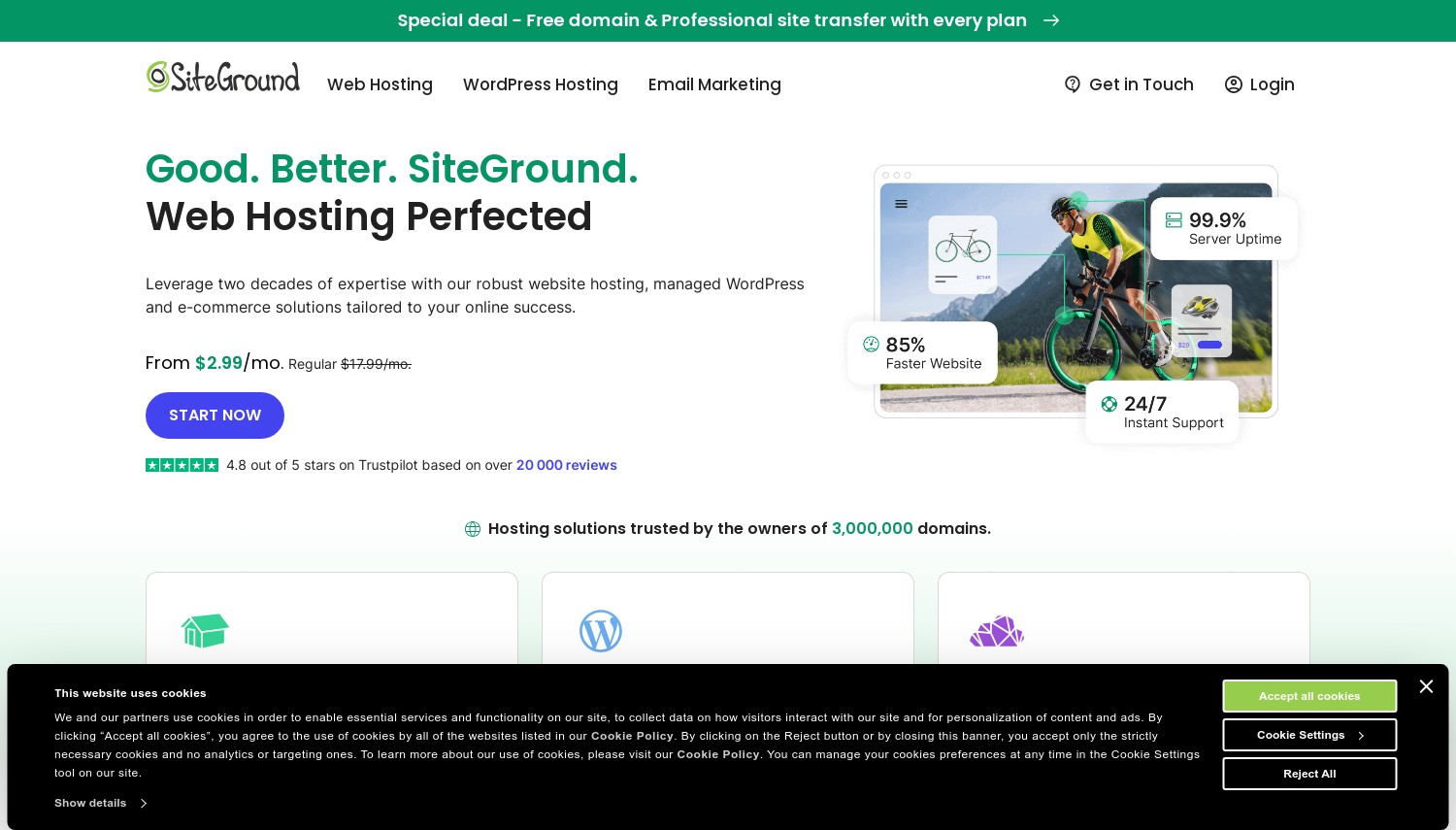

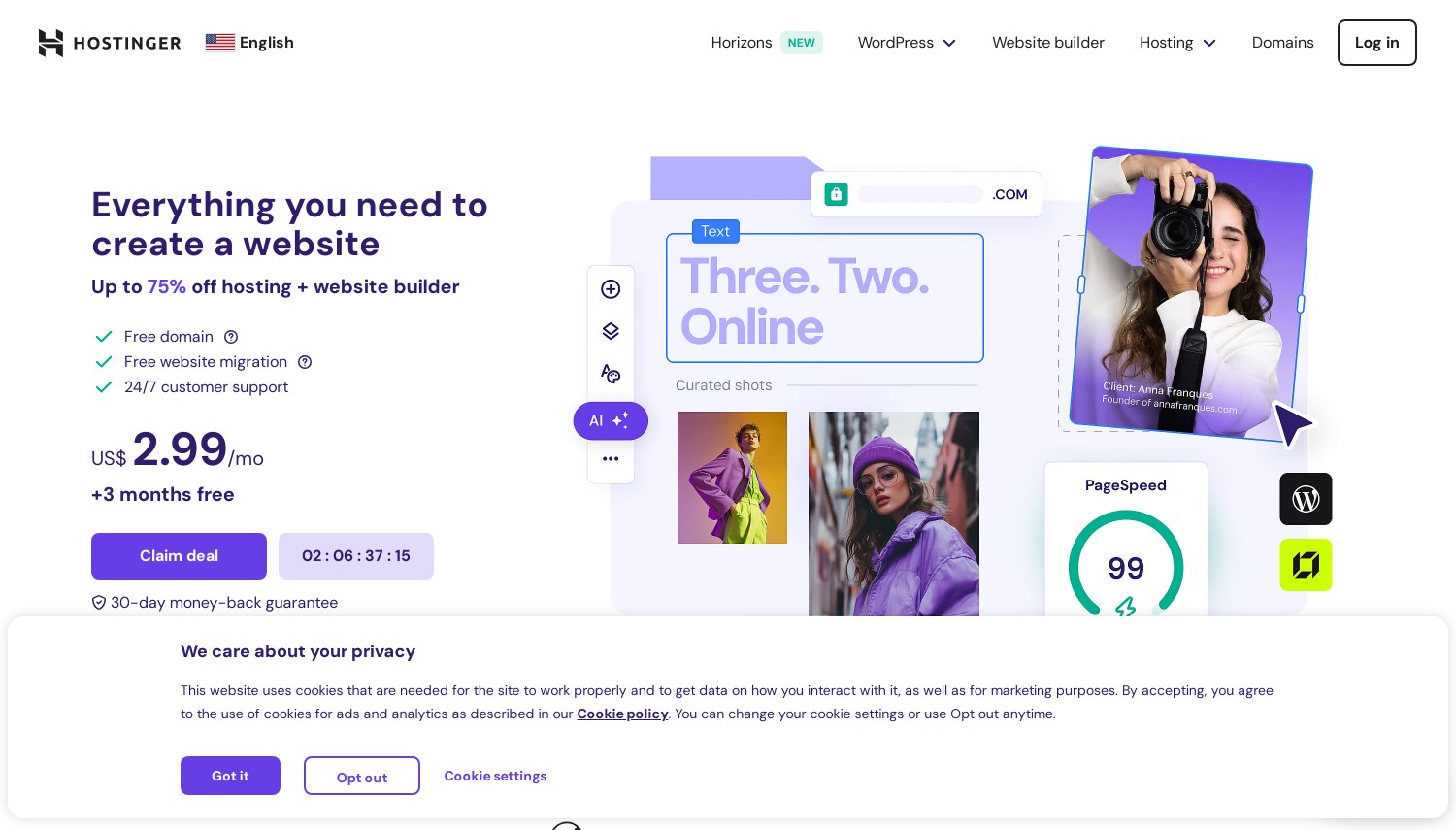

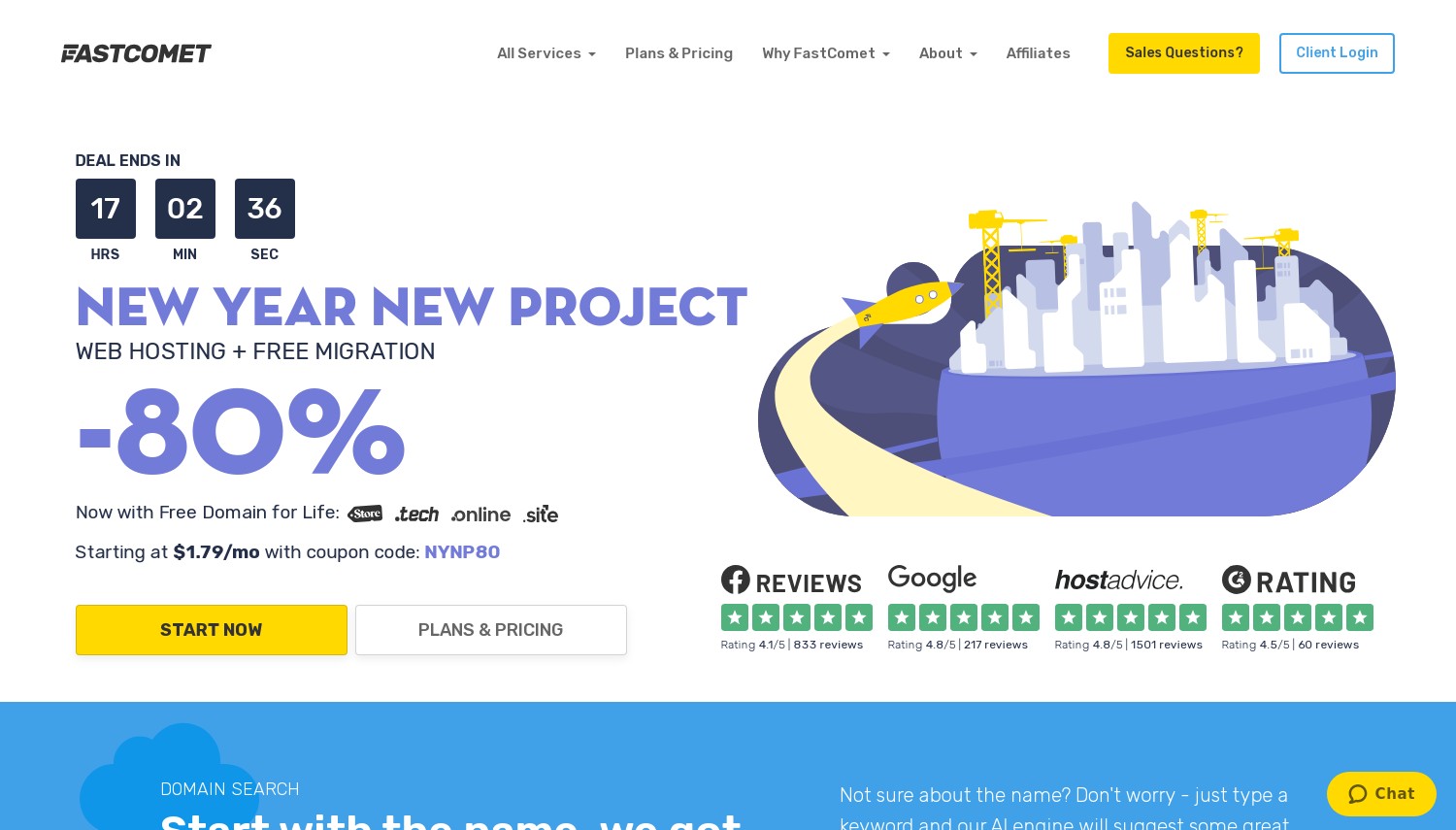

Will I make a mistake choosing Hostinger instead of Bluehost as the prices of Bluehost a quite high right now?
It’s all about size of your site and plan you are looking for. What is you CMS platform too. We recommend you to double check our both Hostinger and BlueHost review.
Hola! This was a very helpful article, senor Mihailov!
Muchas gracias! I now have site run in 2 days!
Nicely you explained everything in your article. Thanks for sharing this information; it’s nice and helpful…
Nice post! I thought it was a bit long, but it is my go-to source as I am setting up my website! Hostinger are being very cooperative, too!
I bought A2 hosting and am very glad of their service! Good article with examples and illustrations!